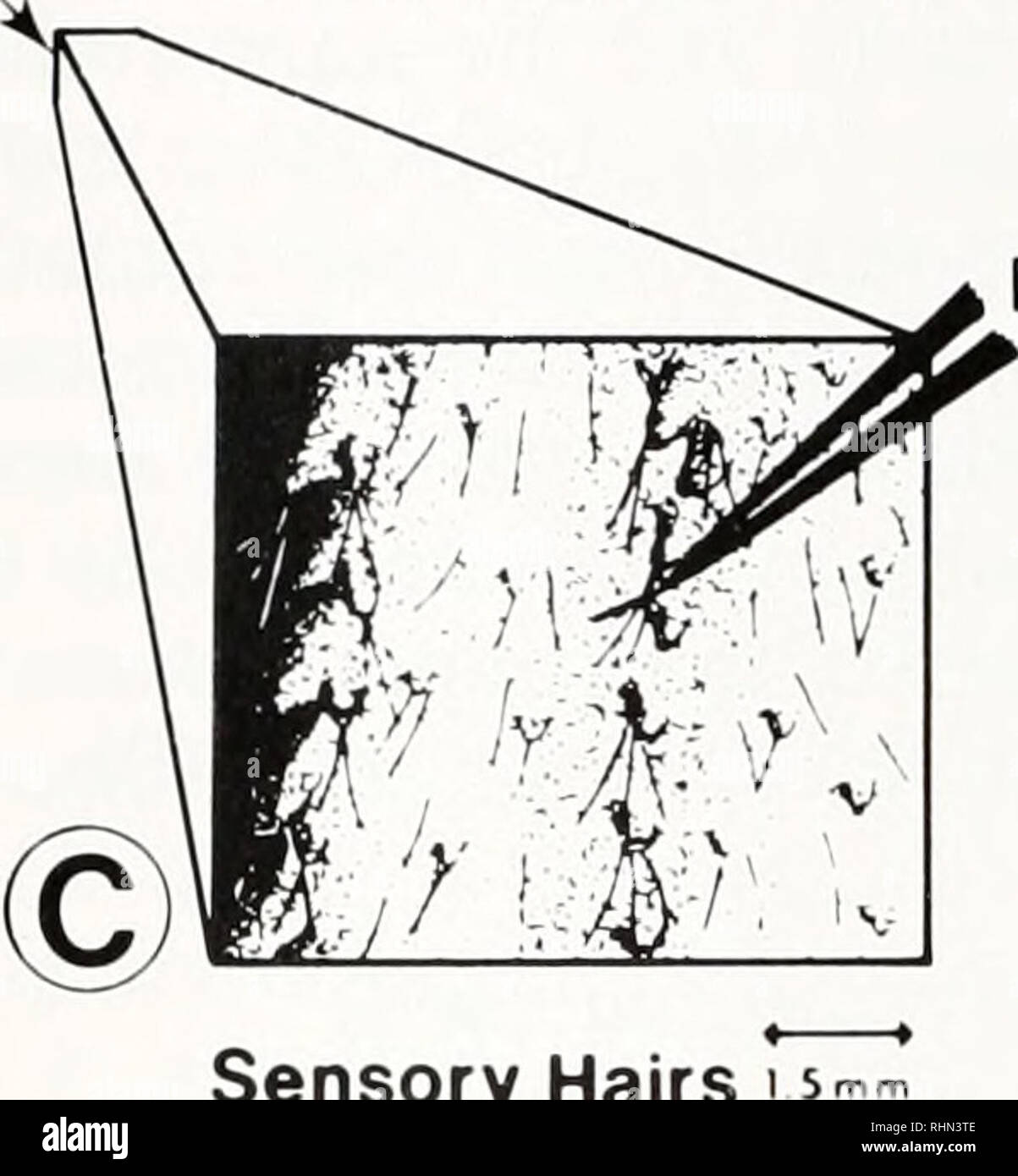. The Biological bulletin. Biology; Zoology; Biology; Marine Biology. Pagurus pollicaris with Hydractinia echinata Dactylozooid Lashing. Forceps Sensory Hairs FIGURE 1. The hermit crab Pagurus pollicaris inhabiting a Polinices duplicatus shell that is colonized by the hydroid Hydractinia echinata (A). The dactylozooid polyps of the hydroid uncoil and lash downward when the colony is disturbed (B). Sensory hairs from the carpus of P. pollicaris are removed (C) and examined under a light microscope for the dactylozooid's cnidae. with a 1% Toluidine blue solution and examined under a light micros

Image details
Contributor:
Library Book Collection / Alamy Stock PhotoImage ID:
RHN3TEFile size:
7.1 MB (202.9 KB Compressed download)Releases:
Model - no | Property - noDo I need a release?Dimensions:
1521 x 1643 px | 25.8 x 27.8 cm | 10.1 x 11 inches | 150dpiMore information:
This image is a public domain image, which means either that copyright has expired in the image or the copyright holder has waived their copyright. Alamy charges you a fee for access to the high resolution copy of the image.
This image could have imperfections as it’s either historical or reportage.
. The Biological bulletin. Biology; Zoology; Biology; Marine Biology. Pagurus pollicaris with Hydractinia echinata Dactylozooid Lashing. Forceps Sensory Hairs FIGURE 1. The hermit crab Pagurus pollicaris inhabiting a Polinices duplicatus shell that is colonized by the hydroid Hydractinia echinata (A). The dactylozooid polyps of the hydroid uncoil and lash downward when the colony is disturbed (B). Sensory hairs from the carpus of P. pollicaris are removed (C) and examined under a light microscope for the dactylozooid's cnidae. with a 1% Toluidine blue solution and examined under a light microscope to count the cnidae. In all of the above tests, sensory hairs approximately 3 mm in length were used. Shell preference tests Two populations (one from the FSUML and the other from St. Joseph Bay) of each of the hermit crabs, P. pollicaris, P. longicarpus, and C. vittatus, were used in the following experiments, unless stated otherwise. Experiment 1. A naked hermit crab was placed in a 1-liter aquarium with two Polinices duplicatus shells of the same size (same shell aperture ± 1 mm). One shell, however, was colonized by a hydroid while the other was bare. The shell choice of the hermit crab was recorded at the ends of two observation periods: (1) at five minutes and (2) at eight hours. Two observations were made to determine whether the hermit crabs stay in the shell they choose first. Control 1. This experiment was done to determine whether there were additional factors associated with hydroid-colonized shells that caused the hermit crabs either to select or avoid these shells. Therefore, the hydroid colonies were scraped off of the shells with a knife. The naked hermit crabs were then given a choice between the shells that had had their hydroids scraped off and shells that were originally bare. The two shells were the same size. The shell choice of the hermit crab was recorded at five minutes and eight hours. Experiment 2. Hazlett (1980) has argued that the degree of av